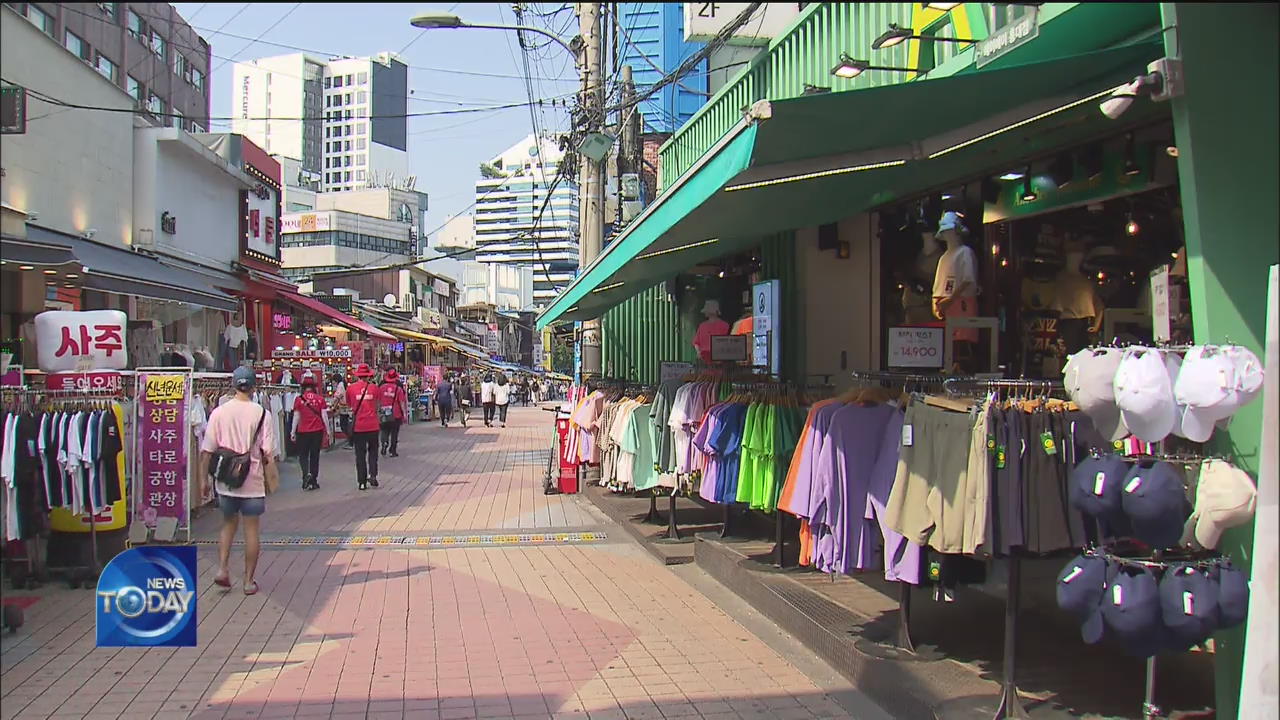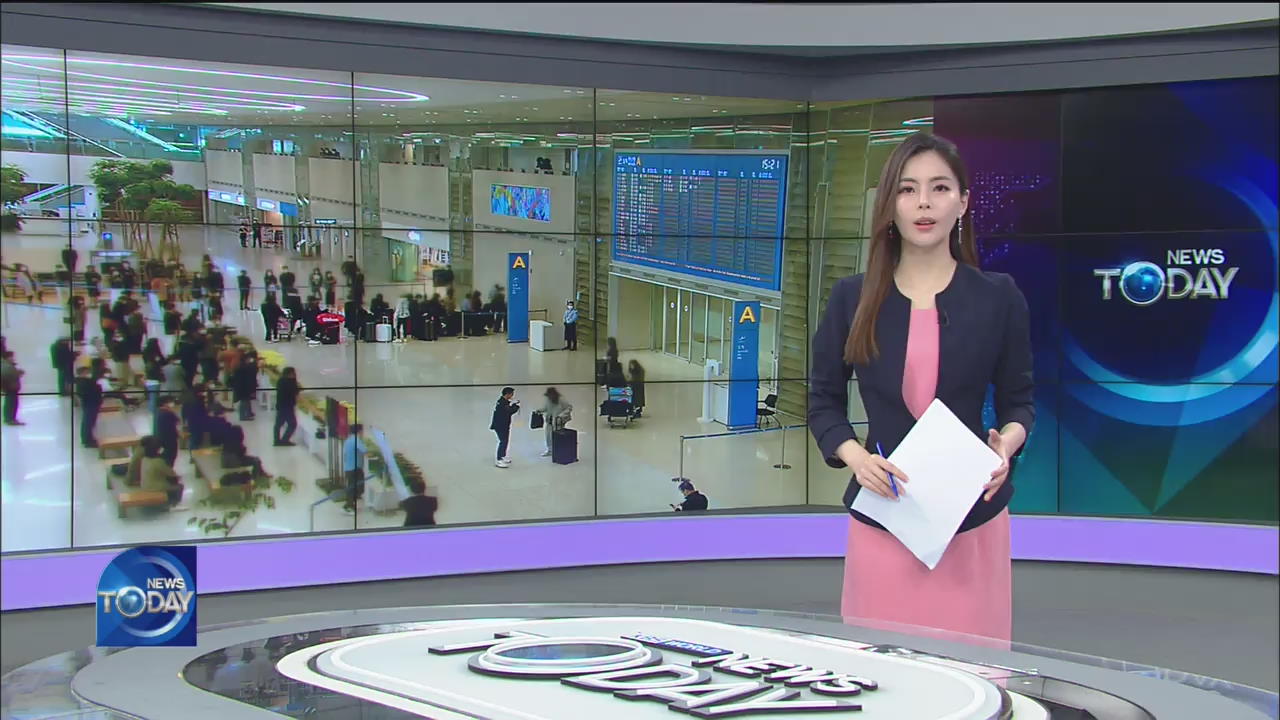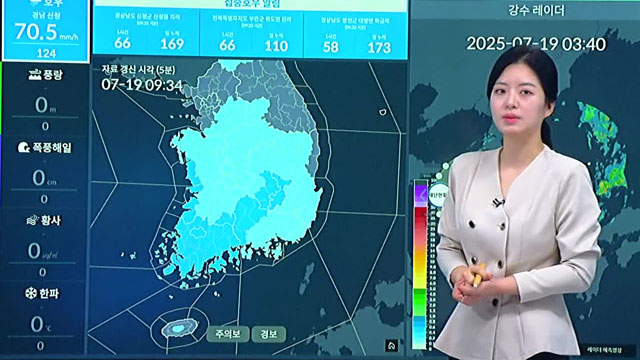STATISTICS ON HOUSEHOLD SPENDING AMID VIRUS
입력 2020.05.22 (15:16)
수정 2020.05.22 (16:46)
읽어주기 기능은 크롬기반의
브라우저에서만 사용하실 수 있습니다.
[Anchor Lead]
COVID-19 has left far-reaching impacts on people’s financial lives in the first quarter. Numbers show that household spending in Korea has fallen most dramatically since data-keeping started. Take a look at the statistics to find out which sectors and consumer categories were hit the hardest.
[Pkg]
A clothing store in Hongdae, Seoul. It’s time to start selling their summer lineup, but spring apparels are still on display. Sales were poor due to COVID-19 so the storeowner couldn’t afford to invest in new merchandise.
[Soundbite] SHIN SE-JIN(CLOTHING STORE OWNER) : "Sales are non-existent, not even 1% of last year’s. It wasn’t this bad even during the 1997 financial crisis."
Statistics clearly reflect such retail hardship. In the first quarter, Korean households spent 28% less on purchashing clothing and shoes compared to a year ago. Expenditure on cultural activities like watchiing a movie or a play also shrank by more than 16%. As the virus started spreading fast in late February, consumer spending on dining out, travels, and education began declining as well.
[Soundbite] KANG SHIN-WOOK(COMMISSIONER, STATISTICS KOREA) : "Generally, spending increase in the first quarter because of seasonal factors. But this year, it decreased even when compared to the 4th quarter of last year."
In contrast, expenditure for food and beverage increased more than 10% as people were told to work or study from home.
[Soundbite] JEON HYEON-JIN(SEOUL RESIDENT) : "My children used to have lunch at school. Now that they eat at home, I have to shop for groceries more often."
Spending on medical goods such as masks more than doubled. However, overall household spending dipped nearly 5%, a record decline since relevant data-keeping began in 2003. Reduced spending resulted in a 38% spike or 1.4 million won in monthly average household surplus. This increase in surplus from declining consumption led to shrinking domestic demand.
COVID-19 has left far-reaching impacts on people’s financial lives in the first quarter. Numbers show that household spending in Korea has fallen most dramatically since data-keeping started. Take a look at the statistics to find out which sectors and consumer categories were hit the hardest.
[Pkg]
A clothing store in Hongdae, Seoul. It’s time to start selling their summer lineup, but spring apparels are still on display. Sales were poor due to COVID-19 so the storeowner couldn’t afford to invest in new merchandise.
[Soundbite] SHIN SE-JIN(CLOTHING STORE OWNER) : "Sales are non-existent, not even 1% of last year’s. It wasn’t this bad even during the 1997 financial crisis."
Statistics clearly reflect such retail hardship. In the first quarter, Korean households spent 28% less on purchashing clothing and shoes compared to a year ago. Expenditure on cultural activities like watchiing a movie or a play also shrank by more than 16%. As the virus started spreading fast in late February, consumer spending on dining out, travels, and education began declining as well.
[Soundbite] KANG SHIN-WOOK(COMMISSIONER, STATISTICS KOREA) : "Generally, spending increase in the first quarter because of seasonal factors. But this year, it decreased even when compared to the 4th quarter of last year."
In contrast, expenditure for food and beverage increased more than 10% as people were told to work or study from home.
[Soundbite] JEON HYEON-JIN(SEOUL RESIDENT) : "My children used to have lunch at school. Now that they eat at home, I have to shop for groceries more often."
Spending on medical goods such as masks more than doubled. However, overall household spending dipped nearly 5%, a record decline since relevant data-keeping began in 2003. Reduced spending resulted in a 38% spike or 1.4 million won in monthly average household surplus. This increase in surplus from declining consumption led to shrinking domestic demand.
■ 제보하기
▷ 카카오톡 : 'KBS제보' 검색, 채널 추가
▷ 전화 : 02-781-1234, 4444
▷ 이메일 : kbs1234@kbs.co.kr
▷ 유튜브, 네이버, 카카오에서도 KBS뉴스를 구독해주세요!
- STATISTICS ON HOUSEHOLD SPENDING AMID VIRUS
-
- 입력 2020-05-22 15:17:19
- 수정2020-05-22 16:46:47

[Anchor Lead]
COVID-19 has left far-reaching impacts on people’s financial lives in the first quarter. Numbers show that household spending in Korea has fallen most dramatically since data-keeping started. Take a look at the statistics to find out which sectors and consumer categories were hit the hardest.
[Pkg]
A clothing store in Hongdae, Seoul. It’s time to start selling their summer lineup, but spring apparels are still on display. Sales were poor due to COVID-19 so the storeowner couldn’t afford to invest in new merchandise.
[Soundbite] SHIN SE-JIN(CLOTHING STORE OWNER) : "Sales are non-existent, not even 1% of last year’s. It wasn’t this bad even during the 1997 financial crisis."
Statistics clearly reflect such retail hardship. In the first quarter, Korean households spent 28% less on purchashing clothing and shoes compared to a year ago. Expenditure on cultural activities like watchiing a movie or a play also shrank by more than 16%. As the virus started spreading fast in late February, consumer spending on dining out, travels, and education began declining as well.
[Soundbite] KANG SHIN-WOOK(COMMISSIONER, STATISTICS KOREA) : "Generally, spending increase in the first quarter because of seasonal factors. But this year, it decreased even when compared to the 4th quarter of last year."
In contrast, expenditure for food and beverage increased more than 10% as people were told to work or study from home.
[Soundbite] JEON HYEON-JIN(SEOUL RESIDENT) : "My children used to have lunch at school. Now that they eat at home, I have to shop for groceries more often."
Spending on medical goods such as masks more than doubled. However, overall household spending dipped nearly 5%, a record decline since relevant data-keeping began in 2003. Reduced spending resulted in a 38% spike or 1.4 million won in monthly average household surplus. This increase in surplus from declining consumption led to shrinking domestic demand.
COVID-19 has left far-reaching impacts on people’s financial lives in the first quarter. Numbers show that household spending in Korea has fallen most dramatically since data-keeping started. Take a look at the statistics to find out which sectors and consumer categories were hit the hardest.
[Pkg]
A clothing store in Hongdae, Seoul. It’s time to start selling their summer lineup, but spring apparels are still on display. Sales were poor due to COVID-19 so the storeowner couldn’t afford to invest in new merchandise.
[Soundbite] SHIN SE-JIN(CLOTHING STORE OWNER) : "Sales are non-existent, not even 1% of last year’s. It wasn’t this bad even during the 1997 financial crisis."
Statistics clearly reflect such retail hardship. In the first quarter, Korean households spent 28% less on purchashing clothing and shoes compared to a year ago. Expenditure on cultural activities like watchiing a movie or a play also shrank by more than 16%. As the virus started spreading fast in late February, consumer spending on dining out, travels, and education began declining as well.
[Soundbite] KANG SHIN-WOOK(COMMISSIONER, STATISTICS KOREA) : "Generally, spending increase in the first quarter because of seasonal factors. But this year, it decreased even when compared to the 4th quarter of last year."
In contrast, expenditure for food and beverage increased more than 10% as people were told to work or study from home.
[Soundbite] JEON HYEON-JIN(SEOUL RESIDENT) : "My children used to have lunch at school. Now that they eat at home, I have to shop for groceries more often."
Spending on medical goods such as masks more than doubled. However, overall household spending dipped nearly 5%, a record decline since relevant data-keeping began in 2003. Reduced spending resulted in a 38% spike or 1.4 million won in monthly average household surplus. This increase in surplus from declining consumption led to shrinking domestic demand.
이 기사가 좋으셨다면
-
좋아요
0
-
응원해요
0
-
후속 원해요
0

















이 기사에 대한 의견을 남겨주세요.